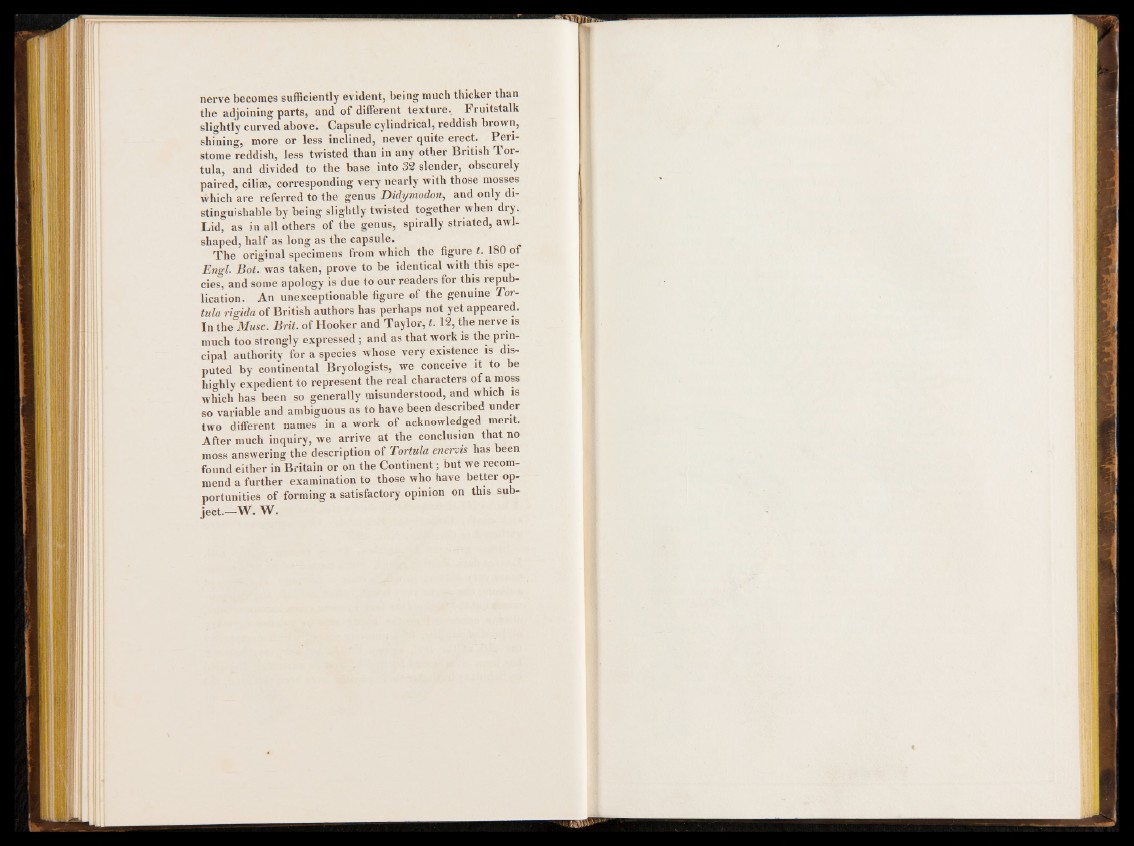
nerve becomes sufficiently evident, being much thicker than
the adjoining- parts, and of different texture.. Fruitstalk
slightly curved above. Capsule cylindrical, reddish brown,
shining, more or less inclined, never quite erect. Peristome
reddish, less twisted than in any other British Tor-
tula, and divided to the base into 32 slender, obscurely
paired, ciliae, corresponding very nearly with those mosses
which are referred to the genus Didymodon, and only distinguishable
by being slightly twisted together when dry.
Lid, as in all others of the genus, spirally striated, awl-
shaped, half as long as the capsule.
The original specimens from which the figure t. 180 of
Engl. Bot. was taken, prove to be identical with this species,
and some apology is due to our readers for this republication.
An unexceptionable figure of the genuine Tor-
tula rigida of British authors has perhaps not yet appeared.
In the Muse. Brit, of Hooker and Taylor, t. 12, the nerve is
much too strongly expressed; and as that work is the principal
authority for a species whose very existence is disputed
by continental Bryologists, we conceive it to be
highly expedient to represent the real characters of a moss
which has been so generally misunderstood, and which is
so variable and ambiguous as to have been described under
two different names in a work of acknowledged merit.
After much inquiry, we arrive at the conclusion that no
moss answering the description of Tortula enervis has een
found either in Britain or on the Continent; but we recommend
a further examination to those who have better opportunities
of forming a satisfactory opinion on this subject.—
W. W.